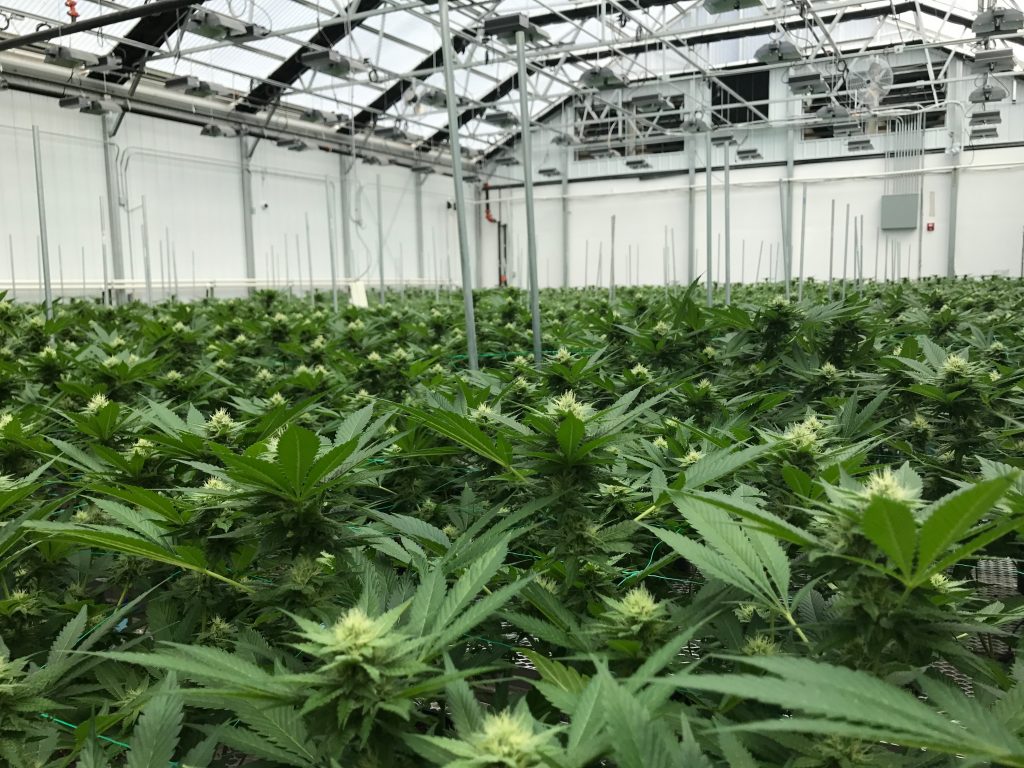Like so much else in the cannabis industry, when it comes to HVAC design and dehumidification for commercial grows, there are two options for operators to choose from: the old and the new. The old in this case are traditional air conditioning systems supplemented with additional, separate dehumidification units. The new are integrated systems that handle cooling and dehumidification all in one. There are pros and cons to both, but with a little background information, it’s easy to see which would be the best fit for your grow facility.
Traditional HVAC systems for Commercial Cannabis Cultivation
Tried and true, traditional HVAC systems have served cultivators well for many years. These simple systems are generally the most cost-conscious option and familiar to any local HVAC contractor. They can be controlled by the facility operator using either a standard thermostat or a basic Building Management System (BMS).
The latter is key for an operator choosing a traditional HVAC system, because a BMS can help mitigate one of the traditional route’s primary shortcomings. When the dehumidifier isn’t integrated as part of the air conditioning equipment, the conflicting needs of the two systems can reduce efficiencies.
For example, the dehumidifier produces heat as it runs, like most appliances. That competes with the HVAC unit that’s working hard to cool the grow facility—particularly if the facility design includes hot-running HID lights. The more the dehumidifier runs, the more heat it puts off. The more heat, the more the A/C needs to run. When the air in the room is cooled, the humidity spikes, requiring the dehumidifier to run again. And the circle continues.
Dehumidifiers work on the dew point principle, cooling air after intake until the moisture that air contains condenses from a gas to a liquid and can be collected or drained. The dew point is a measurement of humidity relevant to temperature, and specifically the point at which the moisture content in the air will condense into dew. When it’s too cool in the grow room, it becomes harder for dehumidifiers to do their job, causing them to work harder. The harder the dehumidifier works, however, the more heat it puts off, in turn causing the air conditioner to work harder. Those competing needs eventually add to operators’ per-pound overhead costs on the electric bill, as well as wear and tear on HVAC components.
Integrated HVAC Systems for Commercial Cannabis Cultivation
While the upfront cost for an integrated HVAC system are typically greater than for traditional equipment, integrated models are generally more efficient and provide operators a greater level of control. That often means you’ll want to invest in more sophisticated thermostat equipment or BMS integrations like Grow Link and Argus that can handle reheating functions as well as cooling and dehumidification.
Reheating is a feature many integrated HVAC systems include to get around the problem posed by the competing demands of traditional climate control equipment. Because dehumidifiers don’t work as well when it’s cool—such as during the night cycle, when it’s cooler but plants are still transpiring—reheat allows the system to warm the air up just enough after intake as to aid dehumidification. While this still reduces overall efficiencies when used long-term (not unlike the emergency heat feature on your home thermostat), it’s one benefit integrated systems afford that traditional models do not.
Understanding Latent Load for Cannabis Cultivation Facility Design
Whether you choose the traditional or integrated HVAC model for your cannabis cultivation facility, determining the latent load of your grow is crucial to ensure your HVAC and dehumidification equipment can handle your crop’s rate of transpiration. The latent load in a grow room is equal—at the very least— to the amount of water distributed to your plants through irrigation on any given day.
Between 90 and 100% of every gallon of water that you feed to your plants will be transpired into the environment. Foliar feeding and / or applying pesticides and other treatments to the leaves of cannabis plants will also increase latent load. Indeed, any moisture added to the air contributes to the latent load already established by irrigation margins. Even cultivation staff contribute to latent load through sweat and exhaled moisture.
When determining latent load, be sure to add a 25% buffer on top of the water you use to irrigate your crop daily. This means your dehumidification system needs to be capable of removing 125% of the amount of water you will feed during your plants’ highest demand growth periods, like late bloom. When calculating latent load and how much buffer you’ll need, create a spreadsheet to track each factor. For example, if you have 1,000 square feet of benchtop in your space, with one flowering plant per square foot, and each plant receives 1 gallon during peak irrigation half a gallon of water per day, you have a base latent load of 1,000 gallons. With a 25% buffer, you’ll need a HVAC and dehumidification system that can handle at least 1,250 gallons per day.
Once you determine the latent load of your grow, you can get a better sense of whether a traditional or integrated HVAC system is best suited to meet those needs within the climate where your grow is operating. As always, when in doubt, it never hurts to reach out to a consultant familiar with cannabis cultivation facility design who can advise on which option is best for your layout, crop goals and construction budget.
